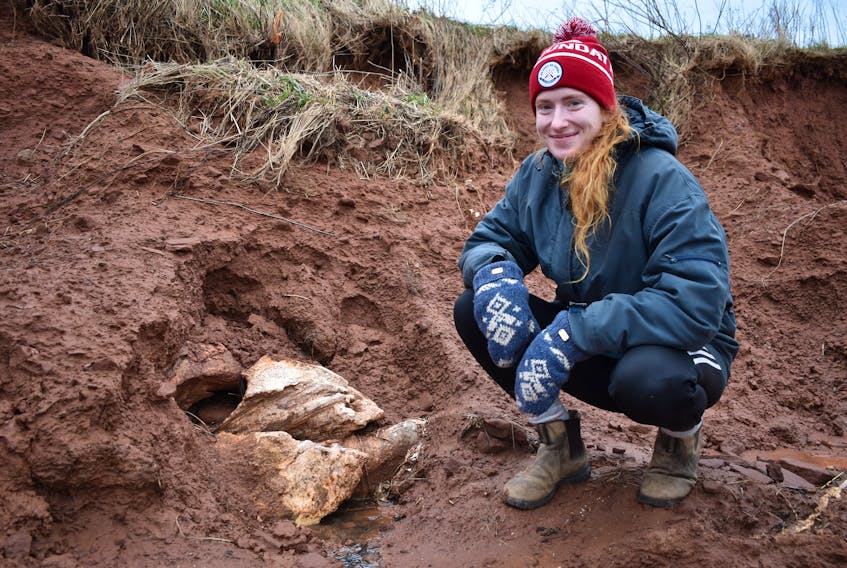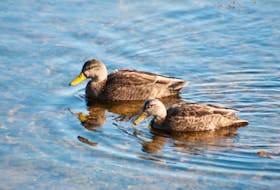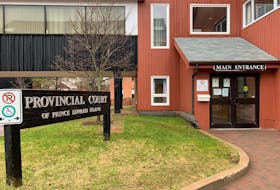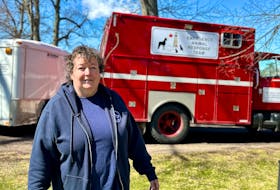MALPEQUE, P.E.I. — Three decades after it was buried, a sperm whale has reappeared on the shores of Malpeque Bay.
Johanna Kelly was walking the shoreline and planning a beach clean-up with the Kensington North Watersheds Association and the community when she glimpsed the white mound.
She knew right away it had to be the Ripley’s whale.
The 37-foot, 20-tonne sperm whale was purchased by the Ripley’s Believe it or Not museums in 1989.

Intent on obtaining the whale skeleton for a display, Edward Myer, vice president of exhibits and archives, had the whale buried on the shore in Hamilton and returned in 1991 to exhume the skeleton and create an exhibit for Ripley’s Toronto aquarium.
But Mother Nature can’t be rushed.
“It was preserved like it had been in ice,” said Meyer in a May 2019 interview with the Journal Pioneer.
It can take up to two decades for a buried whale to fully skeletonize, said Donald McAlpine, head of the department of natural history at the New Brunswick Museum.
“It can take forever to decompose, especially if there’s a lot of clay in the soil,” said McAlpine, who is also the research curator and head of the museum’s zoology section.
For an articulated skeleton – one that’s assembled into the shape of the creature – whoever recovers it will need all the bones and in good condition. Losing or breaking bones is one of the risks of burying whales.
Composting it the new way to prepare skeletons. The animal and a mix of organic material, such as wood chips and manure, are placed together in an above-ground container. After that, things happen quickly, and few bones get lost or broken, said McAlpine.
Recovering a buried skeleton is when the hard work begins.
Chuck Gallison, a retired wildlife officer for the province, was at the unearthing of a blue whale in Tignish.
“You’d think 20 years it’d be gone, but the blubber was massive, it almost acts like insulation from bugs and worms and all the stuff that normally do their duty,” said Gallison.
“When it does come out of the ground, which is going to happen, it’s really good for it because, believe it or not, all the air getting to it and the creatures that get to it, they help break it down.”

He remembers advising the Ripley’s crew to leave the whale buried for as long as they could.
Looking back, Meyer called his decision naive.
“(I had) no idea how to buy a whale, how to make a whale display and - at that time - didn’t really know much about P.E.I., to be honest.”
First off, the location wasn’t noted well and Meyer had trouble locating the site. Then the new landowners refused to let anyone dig up the sensitive shoreline to get at it.
Then there was the cost.
“It’s a very, very expensive proposition to try and clean bones,” said Gallison.
The blue whale from Tignish took $1 million to make it from dirt to display.
Chuck Gallison recalls the Ripley’s whale was one of five sperm whales that had beached themselves in the Covehead area in late 1988.
A rescue effort was mounted, and divers and fishing boats worked to tow the whales off the beach.
Thousands of people watched from the shore as the whales swam off.
But the rescue, while well-meaning, did more harm than good.
“You don’t pull whales off of beaches by their tails because what you do is separate their spinal cord,” said Gallison.
The rescue crew was advised at the time that it wasn’t the right way to save the whales, but they didn’t feel they had any other options, said Gallison.
The creatures died at sea and began to wash ashore.
Gallison can’t say for sure if Ripley’s whale was one of the Covehead five, but he remembers it had rope burns around the tail.
Since then, Gallison went on to stage many more – successful – whale rescues before retiring in August this year.
With the recent discovery, Johanna Kelly doesn’t want to alter the shoreline any further.
“If it keeps going the way its been going, (the whale) is going to be pretty exposed by spring,” said Kelly.
“Myself, I would just let nature take care of it.”
RELATED:









